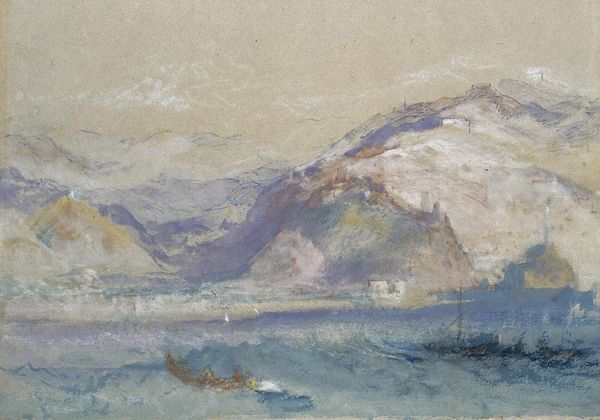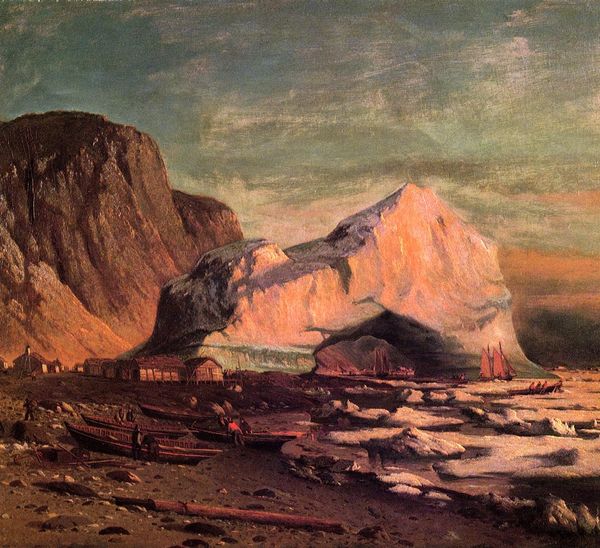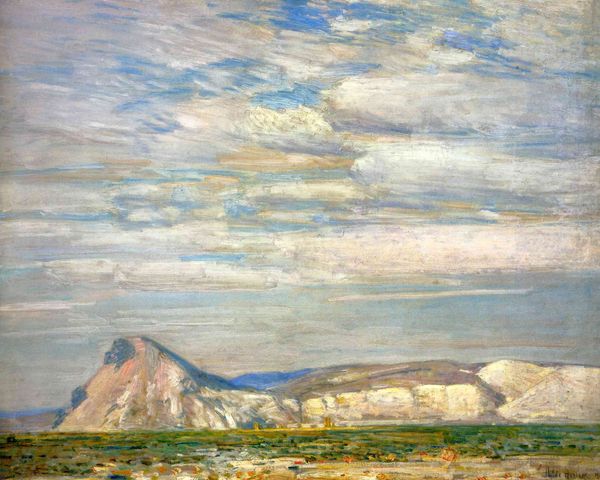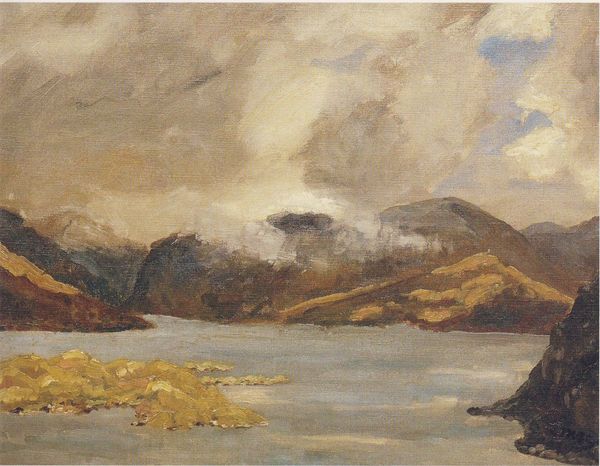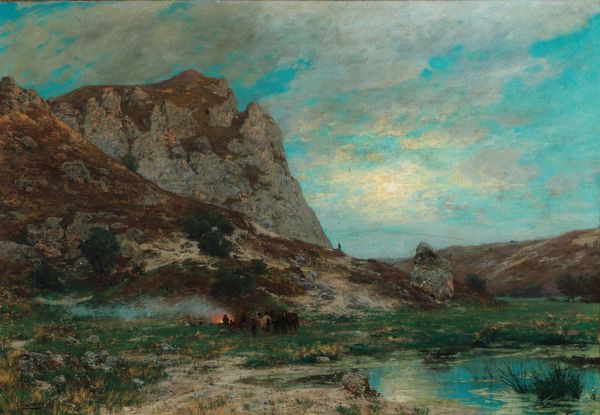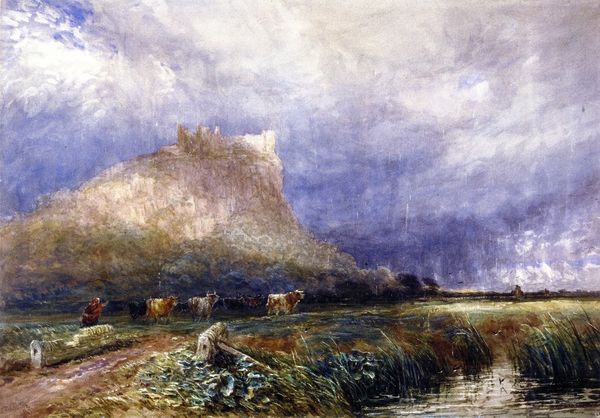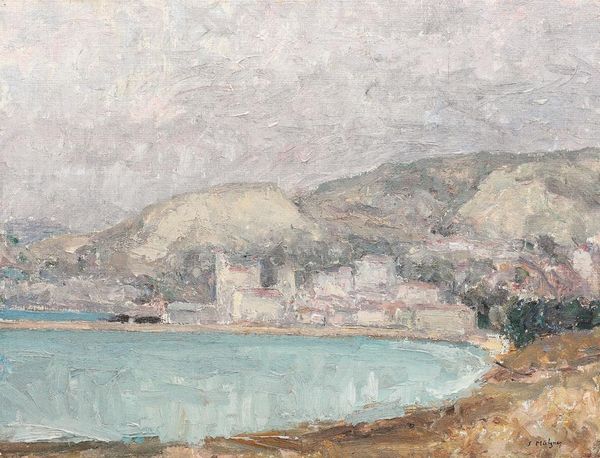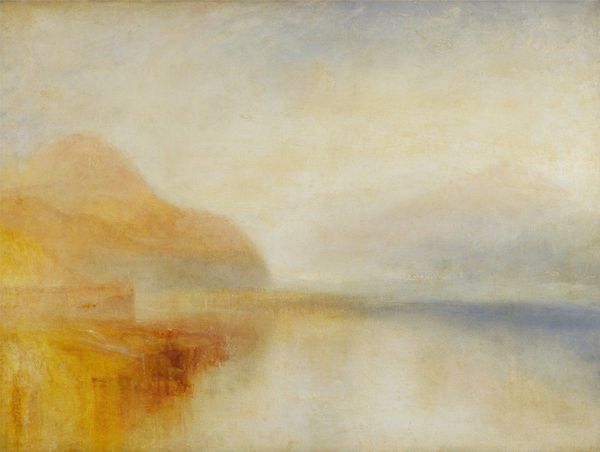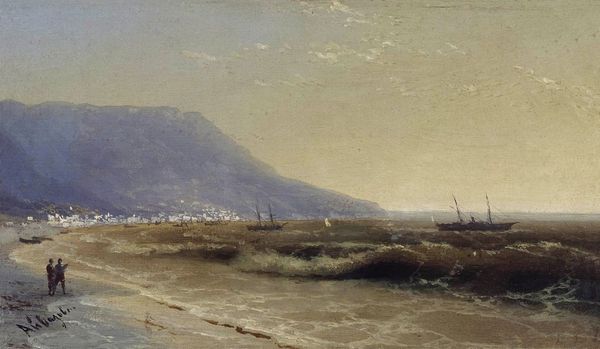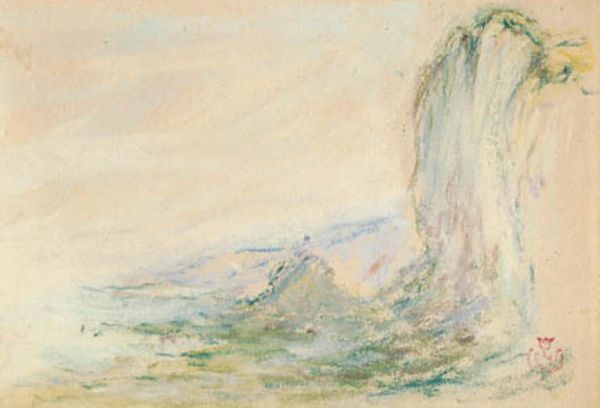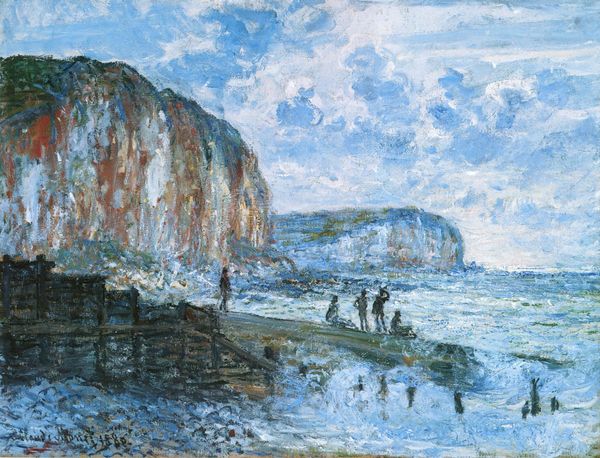
Copyright: Public domain
Curator: Ah, look at this gem. This is Thomas Moran's "First Sketch Made in the West at Green River, Wyoming," dating back to 1871. It's oil on paper, a beautiful plein-air piece. Editor: It's moody, isn’t it? Sort of muted. The scale seems off, like those towering rock formations are emerging from a dream. Almost feels like a landscape painting from another planet. Curator: Moran, as part of the Hudson River School, was really instrumental in shaping perceptions of the American West. Think about what that title implies, the 'first' sketch. It's claiming a kind of discovery, framing the West for eastern audiences. It played a part in Manifest Destiny ideals. Editor: That's interesting because visually, the colors are quite subdued, almost melancholic for a "discovery." There’s a delicate haze, making the rocks appear ghostly, with that strange little huddle of trees in the center like some lonely figures lost in a brown, umber world. I get a real sense of solitude. Curator: Well, think about it historically. This was painted shortly after the Civil War. The nation was healing but also expanding, often at the expense of Native American populations. These landscape paintings romanticized westward expansion while often ignoring the realities on the ground for indigenous communities. Editor: True. So the romanticism serves almost as a pretty veil. Though purely on an aesthetic level, the reflections in the water offer the only sense of bright color. Curator: Right, it adds to the mystique. And those large geological formations... They have an incredible geological narrative, the land tells its story. But, even the artistic framing served a political one back then, promoting the narrative of the West as untamed, ripe for the taking. Editor: That's the real tension, isn't it? The push and pull between personal artistic expression and these much larger sociopolitical implications. I like that kind of ambiguity. Curator: Exactly, understanding this art is as much about understanding its historical role as its aesthetic qualities. Editor: A worthwhile viewing experience, nonetheless. Curator: Absolutely, one can look, listen and perhaps leave having contemplated all the undercurrents within the artwork.
Comments
No comments
Be the first to comment and join the conversation on the ultimate creative platform.
